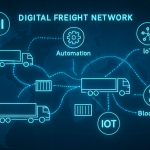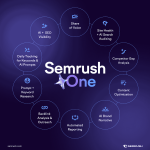In today’s mobile-first world, consumers are constantly on the move—and so are their smartphones. This presents a golden opportunity for businesses to engage customers based not just on who they are, but where they are. A local seo consultant explains that geotagging—embedding location data into digital content—lets businesses deliver hyper-relevant experiences that resonate in real time. Whether you’re a local coffee shop or a global retail brand, geotagging can turn generic interactions into personalized connections. Here are five creative, effective, and professional ways to leverage geotagging to build stronger customer relationships.
1. Personalized Push Notifications Based on Location
Imagine walking past your favorite clothing store and getting a notification: “Hey, you’re nearby! Flash this message for 20% off today.” That’s geotagging at work. Using geofencing—setting up a virtual perimeter around a location—brands can trigger timely push notifications when a customer enters a specific area. This tactic increases relevance, reduces ad fatigue, and leads to higher conversion rates. Retailers, restaurants, and entertainment venues have seen success using this technique to draw foot traffic and increase spontaneous purchases. The key is to ensure the messages feel helpful and are not invasive—value-driven alerts always perform better than generic sales pitches.
2. Boost Social Engagement Through Location Tags
User-generated content is digital gold, and geotagging makes it easier to find and amplify it. Encouraging customers to tag your business location on social media posts expands your reach and adds authenticity to your brand. People trust peer recommendations more than branded content, and seeing real people enjoying your product at a specific place helps build social proof. You can go further by resharing tagged content, featuring it on your website, or running contests for the best location-tagged post. This approach turns happy customers into vocal advocates, all powered by geotagging.
3. Tailor In-Store Experiences with Beacon Technology
Geotagging isn’t just for getting people to your store—it can transform what happens inside, too. Beacon technology uses Bluetooth to detect a customer’s location within a store and deliver micro-targeted experiences. Think: personalized greetings, product recommendations, or exclusive in-store offers triggered when someone passes a certain aisle. This level of contextual interaction not only enhances the shopping experience but also provides valuable data on customer behavior and preferences. It’s a win-win—customers feel catered to, and businesses gain insight to refine future marketing strategies.
4. Deliver Location-Based Content and Ads
Want to make your digital ads work harder? Add a geotagging layer with the help of a local seo consultant. Whether promoting winter boots in snowy cities or advertising lunch specials to office workers in a specific district, location-based advertising is all about delivering the right message at the right time and place. Platforms like Google Ads and Facebook allow precise geographic targeting, helping brands zero in on relevant audiences. This kind of localization boosts click-through rates, improves ROI, and creates a sense of immediacy that generic ads often lack. It’s not just smarter marketing—it’s more considerate communication.
5. Analyze Location Data to Understand Customer Trends
Beyond direct engagement, geotagging is a powerful tool for understanding your customer base. By analyzing location data—such as where users are when they interact with your app, make a purchase, or tag your brand—you can uncover trends that inform everything from store placement to inventory decisions. For instance, if a spike in engagement occurs near a specific park or neighborhood, that could be a prime spot for a pop-up event or a new location. This data-driven insight helps you meet customers where they already are, making every touchpoint more strategic.
Conclusion
Geotagging isn’t just about maps and coordinates but context, relevance, and connection. In a digital landscape where personalization is key, knowing where your customers are can help you understand who they are, what they need, and how best to serve them. From real-time notifications to smarter advertising and enhanced in-store experiences, geotagging offers a toolkit for building more meaningful customer relationships. As location-based technology continues to evolve, brands that embrace it will be better positioned to stand out, stay relevant, and turn proximity into loyalty.
Lynn Martelli is an editor at Readability. She received her MFA in Creative Writing from Antioch University and has worked as an editor for over 10 years. Lynn has edited a wide variety of books, including fiction, non-fiction, memoirs, and more. In her free time, Lynn enjoys reading, writing, and spending time with her family and friends.















